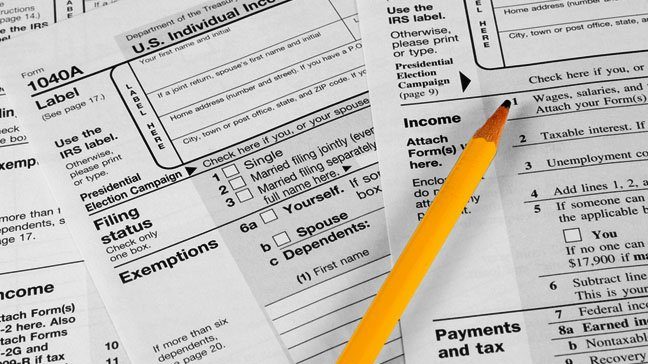
Since there are so many activities involved in the moving process, it necessitates a lot of preparation. Filing your tax returns in both the state you are leaving and your current state of residence is one of the many things you will need to prepare for. When it comes to tax return calculation and filing, location is crucial. As a result, learning how to file tax returns after a long-distance move is important.
In the United States, various forms of taxes are levied at different levels of government. The state income tax is distinct from the federal income tax. Both the federal and state governments levy income taxes. Individuals are taxed on their taxable income, which is described as their net income. State income taxes are imposed directly by the state on income received in the state where you live.
At the state level, there are a number of taxes that can be imposed. Payroll tax and sales tax are two examples. Self-assessment is common for many taxes. This means that each taxpayer determines how much they owe based on the tax rates and deductions that have been established, and then files their tax returns.
Since state-based taxes exist, when you move long distances, you must cease paying such state-based taxes to your old state and begin paying to your new state of residence. Similarly, if you make a long-distance move, you must stop paying state-based taxes in that state and begin filing them in your new state of residence.
It is important to obtain general tax details in your new state of residence while making a long-distance move. You would be able to stop tax evasion as a result of this. Noncompliance with tax laws to neglect are both examples of tax offenses. Tax evasion has a penalty added to it. Except for federal taxes, most of these fines are state-based. As a consequence, fines and their magnitude will be determined by the state’s particular tax law. After a long-distance move, you must conduct due diligence to ensure that you are in compliance with all relevant laws.
Taxpayers calculate and file their own taxes. As a result, following a long-distance relocation, you’ll need to understand the proper filing mode and method in your new state of residence to ensure that you file correctly and prevent any tax penalties. Moving was stressful for you, as it was for many others. As a result, we’ve compiled a list of items to keep an eye out for while filing taxes in a new state. This list will assist you in preparing your tax return following a long-distance move.
When you make a long-distance move and sell your home, the state requires you to pay an Exit Tax. The Exit Tax is 2% of the gross selling price of property by people leaving the territory. Whether or not there were Capital Gains on the land, the exit tax must be paid.
Also Read: Should I Sell Everything Before I Move?

When you arrive in your new state of residence, it is important that you familiarize yourself with the state’s tax laws. Aside from federal tax laws, each state has its own set of rules. Awareness of the relevant tax law will direct you and assist you in preventing tax evasion.
Tax authorities are in charge of administering taxes. Per state has its own tax collector. You can also locate the relevant state authority.
Since states have the authority to create their own tax laws, tax rates vary from one state to the next. The tax rate is set by each state. As a result, when you move to a new state, you will need to determine the new state’s tax rate. Residents in some jurisdictions are not taxed on their earnings. You may be shocked to learn that your new home state does not have an income tax. As a result, you can save money. Other states rely heavily on taxation to fund their budgets, resulting in high tax rates. Others have a single tax rate.
As a consequence, it’s important to learn about the tax rates in your new state of residence. This type of knowledge is widely accessible. You may, however, work with a tax accountant to obtain the most up-to-date tax details available in the state.
Also Read : Moving To A New State Can Lower Down Your Energy Bill
Many state taxes are self-assessed, as previously mentioned. Taxpayers are the ones who assess and file tax returns. The tax authorities would then review it and make any required changes to the tax returns. If you’re married, you have the option of calculating your taxes jointly with your partner and filing jointly. You will register as the head of a household if you are not married but have dependents in your household.
There are a variety of tax deductions available, especially for income tax. These deductions, however, are subject to certain restrictions, and the amount of deductions available is determined by state tax laws. As a result, after you’ve completed your long-distance move, you’ll need to research the allowable deductions and rates in your new state of residence. To stop tax evasion, you can do this before filing.
You can file your tax returns electronically using a variety of platforms. Physically filing tax returns is also an option. The use of electronic filing of tax returns is now widely used, and the IRS encourages it. Even software programs for calculating tax returns for taxpayers are available. When you arrive in your new state of residence, it’s vital to learn about the filing options available. After you’ve decided on a filing mode from the options, you’ll need to register.
Are you considering moving to Florida, or another state? WowMover will assist you in safely transporting yourself and your belongings to your new location. If you want a free moving quote for your long-distance move, Call us today at tel:(833) 617-2307
Related Articles:





